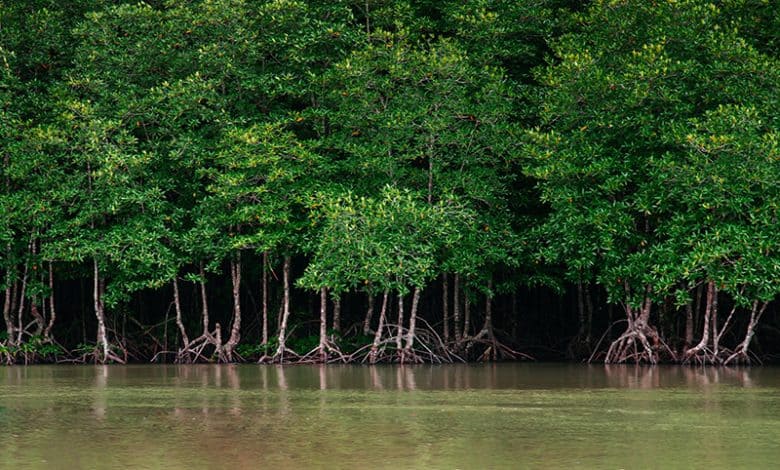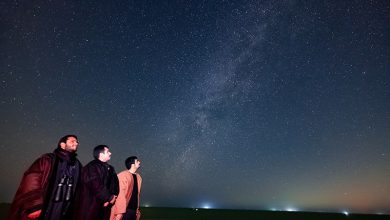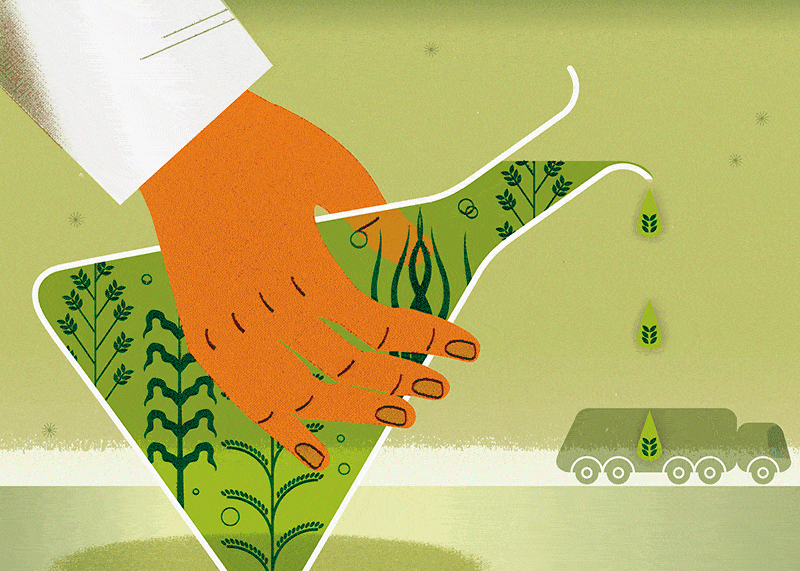
Dr. Tarek Kabil
is a scientific writer and a faculty member at the Faculty of Science, Cairo University
Mangrove forests are unique and distinct ecosystems, as they grow in areas where land meets sea water in tropical and subtropical areas, and tolerate high levels of salinity and changing and harsh environmental conditions unlike most other types of plants. Although these forests are found in about 123 regions worldwide, in terms of numbers and statistics, they are rare habitats because they make up only about 1% of tropical forests and about 0.4% of all forests worldwide.
There are more than 80 species of mangroves, of which about 60 are found and spread on the coasts of the seas and oceans of the tropics and subtropics, especially in Southeast Asia. The Arab world has only three species (genera) of coastal Mangrove aikat: the gray or black mangrove known scientifically as Avicennia Marina, the red mangrove known as Rhizophora Mucronata and the orange mangrove known as Bruguiera Gymnorhiza. A fourth less common additional species known as Indian Mangrove or Ceriops tagal is recorded on the island of Mossiri, Eritrea.
The first type Avicennia Marina, known as Mangrove in Arabia or Shura (as it is called in Egypt and Sudan), is the most common species in the region, as it is widespread around the western Red Sea coast (the coasts of Egypt and Sudan) and the eastern coast (the coasts of Saudi Arabia and Yemen), as well as in the Gulf of Aqaba and the Arabian Gulf. This species is one of the most widespread species of Mangrove in the world, stretching from East Africa and the Red Sea to the tropical and subtropical shores of the Indian Ocean to southern China, and most of Australia to Polynesia, Fiji and the island of New Zealand. The name of this species derives from the name of its discoverer, the Arab scholar Ibn Sina, Avicenna (The Law of Medicine), and from its distinctive marine environment, where the word Marine or Marina refers to marine areas.
Mangrove plants can adapt to conditions and live in the saline environment, where they get rid of excess salinity by more than one mechanism, which varies from one type to another, such as expelling salt and getting rid of wilted leaves and organs saturated with salts. It is also characterized by the presence of existing roots and emerging above the water called respiratory aerial roots that help the plant breathe and help it survive in that difficult and harsh environment, and at the same time these roots calm the tidal currents, which helps to provide a calm water environment, which is one of the most important requirements for plant living. The seeds of this plant germinate while still on the mother trees, and once they reach maturity, the seedlings fall and float in the water until they establish themselves in the shallow water where the developing roots appear.
Mangroves are usually semi-submerged during high tide as tree trunks disappear almost underwater, and the leaves of the plant are opposite lanceolate to oval, often sharp in top and have a small neck, ranging in length from 3-7 centimeters, and between 1-3 centimeters in width.
Biodiversity-friendly environment
Mangrove sites are wetlands that encompass a variety of ecosystems and include a unique and diverse mix of flora and fauna, sothey are usually highly biodiverse due to their high organic content and the large number of marine organisms gathered in that environment. Mangrove forests provide a large number of benefits and ecosystem services. First, they provide a suitable living environment for fish and crustaceans, and are an important food source for a large number of animals such as camels, monkeys and birds. It also works to support food security in coastal areas and the local economy, especially for local fishermen, as it is considered a good breeder and natural incubator for many species of fish and crustaceans. Camels, sheep, goats and some wild animals feed on the leaves and stems of the plant. In some countries, mangrove forests are also used for beekeeping, where they collect the nectar of their flowers and produce honey with a distinctive flavor.
Mangrove forests effectively support ecotourism due to their innate beauty and charming isolation, and they play an important role in protecting beaches and coastal areas from erosion and erosion, as well as their role in mitigating the effects of climate change, gusts of sea storms and other extreme phenomena. In addition, it is considered a habitat of blue carbon, and it is one of the most efficient in absorbing and storing carbon in subsoils, and it surpasses other tropical wild forests in this matter by 3-4 times, which reflects its importance and vital role in reducing the effects of global warming causing climate change.
Bacteria in the soil convert plant leaves that fall in water into primary organic compounds, and this is continuously to benefit the rest of marine organisms and support their diet, and a large number of birds use plant branches as nests for laying eggs and reproduction. Thus, the environment of the mangrove plant is one of the attractive and supportive habitats for a large number of marine organisms, especially fish, shrimp, crustaceans, algae, fungi, worms and insects.
Human
challenges and pressures Despite their recognized environmental role and benefits that are difficult to count or count, mangrove forests have been subjected to great pressures and many serious challenges for a long time, most of which are due to negative human practices and development activities that do not take into account the environmental dimension. These forests are degraded rapidly, with large parts of them in more than one location around the world classified as ecosystems in danger of extinction.
The ecosystems of these plants, like other ecosystems, are affected by the consequences of environmental problems resulting from human activities and human indifference to the functional load of habitats and their ability to withstand negative pressures and influences. Coastal development projects that drain wetlands and degrade mangrove forests are among the most dangerous and destructive human activities on mangrove habitats, destroying soils, removing grass-covered bottoms, and destroying rock cracks and vents full of wildlife. Oil pollution, oil spillage and hazardous materials during offshore platform operations, tanker accidents to beaches and mangrove sites and subsequent mixing with plant buds, aerial roots and tree trunks are frequent and destructive risks to this rich wildlife living environment. Some studies have estimated the annual degradation rate of mangrove forests globally at about 1% per year, which is very impressive, given the scarcity of mangrove forests and their presence limited to tropical and subtropical areas.
In view of these increased risks and the vulnerability of Mangrove’s habitats at the same time, foundations and guidelines have been established to protect these habitats from human development activities that are usually held near Mangrovean sites. The most important of these are non-interference directly or indirectly with the timing and quantity of fresh water flow from rivers and valleys to the Mangrovean habitats;
Recognizing the gravity of the threats to mangroves, in 2015 the Executive Board of the United Nations Educational, Scientific and Cultural Organization (UNESCO) approved the proclamation of 26 July as International Day for the Conservation of Mangrove. Given also the importance of this plant and the role of lush forests in supporting wildlife, the local economy, etc., relevant experts have been calling for the multiplication and expansion of forest areas, in the hope of maximizing the role of this rich habitat in addressing the risks of climate change, protecting global food security and achieving sustainable development.




